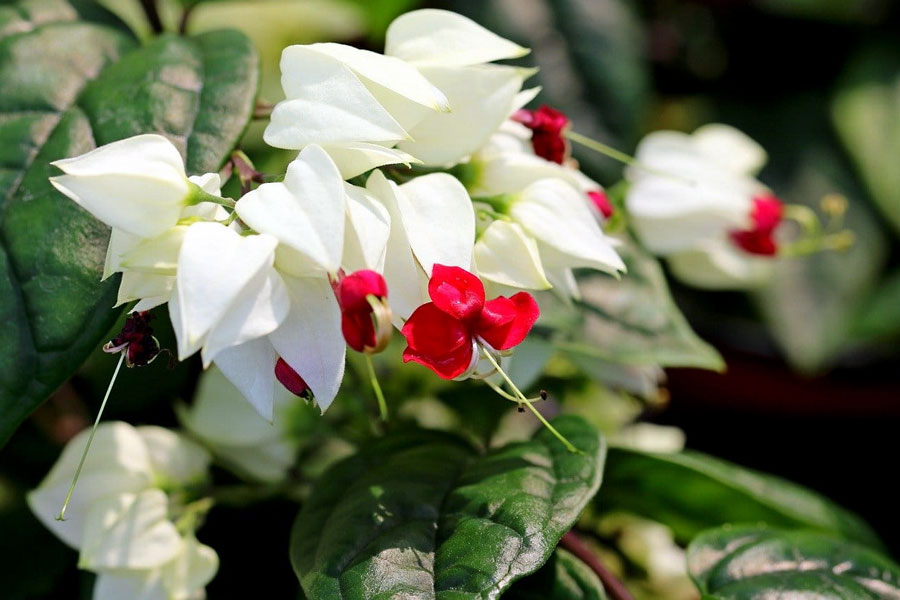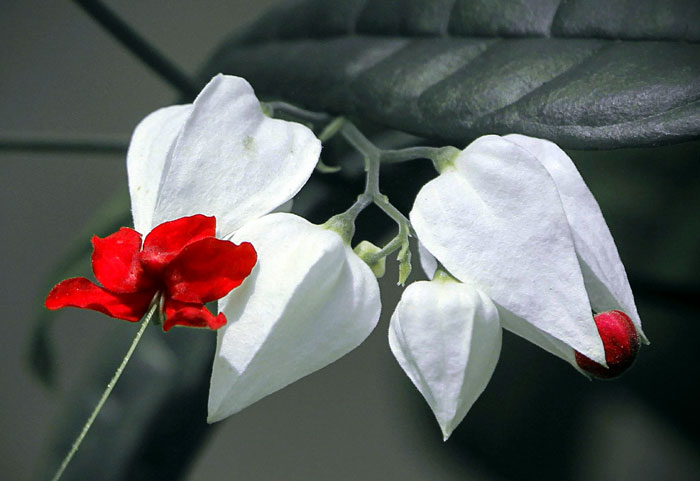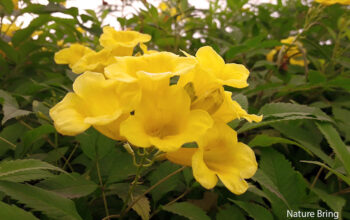Clerodendrum Plant (bleeding heart vine)
Glorybower, bag flower, and bleeding-heart vine are some of its common names. Most species of the genus occur in tropical Africa and southern Asia, but a few are also found in the tropical Americas and northern Australasia, and a few in eastern Asia in the temperate zone.
Leaf plates of Clerodendrum that is whorled or opposite-lying, heart-shaped with a rough “quilting” surface. They range in length from 20 to 30 centimeters, and their edges can be solid or serrated. Flexible stems quickly became lignified at the bottom. Spectacular flowers with long stamens compose the terminal racemes of corymbose inflorescences.
The larvae of some Lepidoptera species, including Endoclita malabaricus and Endoclita sericeus, feed on Clerodendrum species. Hummingbirds and butterflies are attracted to clerodendrums that are blooming.
Overview Clerodendrum Plant
Scientific name Clerodendrum
Common name Bagflower , Bleeding-heart, glorybower,
Plant type flowering vine
Sun Full sun, or partial shade
Soil Well-drained, sandy-loam soil
Soil pH 6.0-8.0
Flower colors Red, Orange, Yellow, Purple, Pink, and White.
Blooming time June to the first autumn
Zone 8-11
How to Grow and care Clerodendrum Plant
You should leave enough room around the plant to remove the root runners wherever you plant it.
Growing from seeds
Clerodendrums can be grown from seeds. The seeds are sown in the last days of February or the first week of March. Pour a soil mixture containing sand, turf soil, and peat into the container, and then sprinkle the seeds on the surface evenly. Once the crops are removed, they are placed in a mini-greenhouse under good lighting. They should be ventilated regularly, and the soil mixture should be kept moist. Plants should begin to sprout after 6-8 weeks when properly cared for. It is also possible to plant seedlings in pots with a diameter up to 11 centimeters. The seedlings gradually become accustomed to the conditions of the adult bushes as they take root and grow.
Growing from cuttings
You can propagate clerodendrum by cuttings if you already have it. During the spring, you will be able to take cuttings from the bush once it has been trimmed. Cuttings in spring and summer become rooted quite quickly, while rooting occurs in water. As soon as the cuttings have taken root, they are transplanted into separate pots with a diameter of approximately 70 mm, after which they are covered with a glass cap. Maintain moist soil on the surface. After the cuttings have fully developed their root system and are covered with new stems and leaves, they are neatly placed in a larger container that has a diameter of about 90 mm.
Sunlight
A clerodendrum bleeding heart performs best if it is partially shaded or in dappled sunlight, but it may tolerate full sunlight if kept moist. The best site for your clerodendrum will be partially shaded, with some afternoon or early morning sun.
Watering
In the spring and throughout the winter, water the soil regularly so that it does not become waterlogged. Bleeding hearts will not tolerate wet soil in winter or dry soil in summer. In the summer, water the bleeding heart plant once a week if less than an inch of rain fell in the previous week. Water the bleeding heart plant less during cooler weather and during the winter.
Soil
As the plant is not very selective in its soil requirements, it can grow successfully on soils ranging from clay-loam to sandy-loam. Nonetheless, the soil should have a pH range of 6.0-8.0, be deep, fertile, and well-drained.
Fertilizer
From the beginning of spring to the end of the summer, feeding occurs once every 15 days. In order to produce blooms, clerodendrum bleeding heart requires frequent fertilization to get the nutrients it needs. Slow-release fertilizer should be applied every two months during the blooming season or a water-soluble fertilizer should be applied every month.
Pruning
Clerodendrum should be pruned every year or two to keep it bushy and full. During a cold winter, the plant may look shabby but will bounce back in the spring. If you’d like, you can do a hard pruning after the spring bloom to keep the size under control and promote lush growth. You should prune your clerodendrum in late winter before it sprouts new growth. Remove all the stems from your plant, as the new shoots will produce flowers for the season. Fresh spring shoots should be cut into two-to-four-inch cuttings and planted in well-drained compost. Place the compost in a humid area with indirect, bright light and keep it moist.
Read also:
How to grow and care for Bleeding hearts plants. Sugar cane plants growing guide. Growing Gloriosa lily in your garden. How to propagate plants by cuttings. Propagate plants from softwood cuttings. Ice plants growing and care tips. Tuber rose bulb growing guide. 07 most popular kalanchoe species for your garden. Snapdragons plants growing at your home. Roses cutting propagate with potatoes.
For pin:







